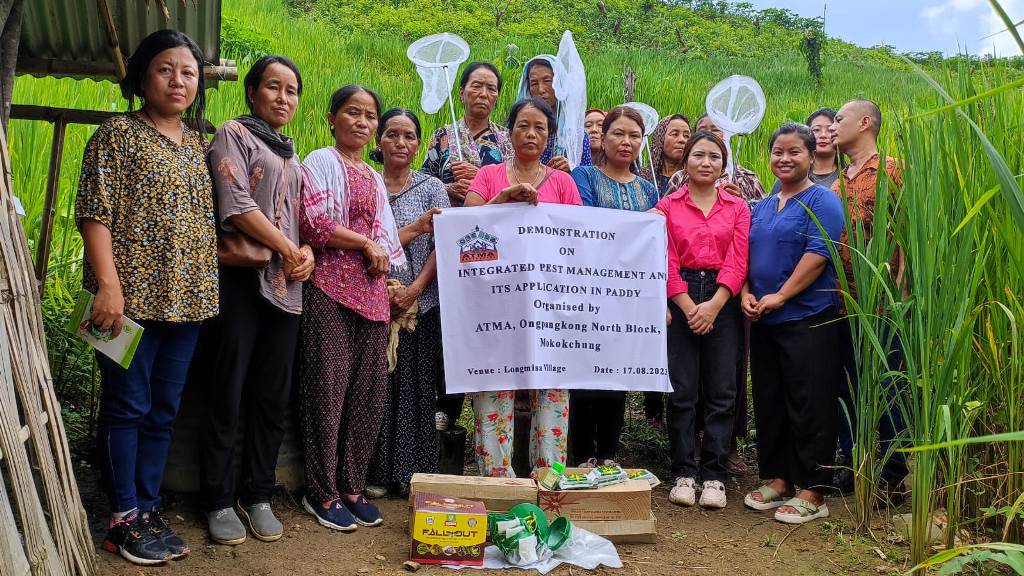Published on Aug 18, 2023
By EMN
Share

DIMAPUR — Agricultural Technology Management Agency (ATMA), Ongpangkong North Block, held a demonstration programme on ‘integrated pest management and its application in paddy’ at Longmisa village, Mokokchung district, on Thursday.
On the occasion, resource person Kirangtemla, agriculture field assistant, DAO Mokokchung, informed the farmers about biological pest management of rice, non-chemical pest management options, and the use of appropriate pesticides as a last resort at the right time and dose using proper application techniques.
She emphasised to the farmers the pest diseases of paddy that are prevalent in the northeast, such as blast diseases, brown spot, leaf folder, and gundhi bug, as well as their management practices. She also informed them about several pests that attack paddy fields in various ways and at various stages.
[bsa_pro_ad_space id=1]According to a press release by ATMA, increased reliance on pesticides for pest control has been found to be unsustainable and ineffective, so integrated pest management (IPM) has been introduced as a pest management alternative in rice. It claimed that IPM in rice helps to reduce risk to the environment and human health.
Meanwhile, ATM Nuksunginla Jamir, a resource person, facilitated a demonstration of farmers' fields on ‘improved cultivation practises of maize var. HQPM-1.’ She demonstrated line sowing of maize with a spacing of 20–25 cm (plant-plant) and 60–75 cm (row-row).
She underscored the importance of seed rate, i.e., 10kg/ha, sowing time (February/March, June/July, or September/October), method of sowing, and weed management.
She educated the farmers on the importance of irrigation, which includes five critical stages of water requirements: seedling, knee height, tasselling, silking, and grain filling.
She also emphasised to farmers the advantages of hybrid maize varieties over local varieties, citing superior nutritional content (80% protein) as compared to normal maize (less than 50%), fewer pest and disease incidences, and higher yield than any other local variety of maize (i.e. 20-30 quintals/hac).
Ten female farmers participated in the demonstration programme. Each farmer received neem oil, maize seeds (variety HQPM-1), pheromone traps, insect traps, and roban (rat killer) etc., as inputs.